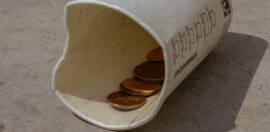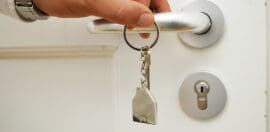Aussies suffering from rental stress and struggling to find social housing

24 January 2020 at 4:36 pm
The Productivity Commission found many people were experiencing chronic housing stress
More than four in 10 low-income renters in Australia are struggling to pay their rent despite receiving government assistance, new research shows.
A report from the Productivity Commission found that 40.5 per cent of low-income people receiving Commonwealth Rent Assistance (CRA) were in rental stress – spending more than 30 per cent of their income on rent – while one in eight spent more than half their income in rental payments.
CRA is currently $68.50 a week for singles who pay more than $150 weekly in rent, and housing advocates say an urgent 30 per cent increase is needed to the payment in light of these figures.
Everybody’s Home campaign spokesperson Kate Colvin said Australia was amidst a housing crisis which left people on low incomes paying rent they can’t afford because there was nowhere else to go.
“Low income renters are doing it tougher than ever and need urgent relief,” Colvin said.
“Over the past 20 years rents have been rising faster than CPI (Consumer Price Index), the rate at which CRA is indexed. Now the maximum rate for a family is $90 per week, but the median rent in Australia is $436.
“It means that even with rent assistance many Australians are having to make the really tough choice between paying for basics like food or medication or paying the rent.”
Last year it was revealed the number of low-income households struggling to pay their rent had doubled in the past two decades, with 170,000 Australian homes with less than $35 a day after covering their rent.
The commission’s report also said the proportion of people finding social housing was dropping due to years of underinvestment in social housing by numerous governments.
This is particularly an issue in Victoria, which allocates the least of all Australian states and territories on social housing per person, spending just over half of the national average.
Analysis of the report from the Council to Homeless Persons (CHP), showed that increasing the state’s spending on social housing from $92.02 per Victorian to the national average of $159.10 would create $1.32 billion in social housing investment over three years.
CEO Jenny Smith said with half of Victorian low-income private renters suffering rental stress, and given the state has more than 49 unassisted requests for accommodation every day, urgent action was needed.
“This level of investment would make a massive difference to homelessness in Victoria. Victoria has a stronger economy than other states and should be doing more, not less, to address the serious problems in housing and homelessness revealed in the report,” Smith said.
“New social housing is the most effective way to reduce homelessness because the single biggest problem faced by homelessness services is that housing that people on low incomes can afford is just not available.”
While the Victorian government has recently increased its social housing spend per person, it is still spending less per person than it did in 2014.
The Victorian Public Tenants Association estimated that in 2020, there will be 100,000 people on the joint public and community housing waiting list.
Executive officer Mark Feenane said public housing stock must be increased so that all Victorians who need a home, have one.
“Victorians care for and look out for one another. It is uncharacteristic that we could also have 100,000 of our peers – enough people to fill our great MCG – waiting for a home,” Feenane said.







